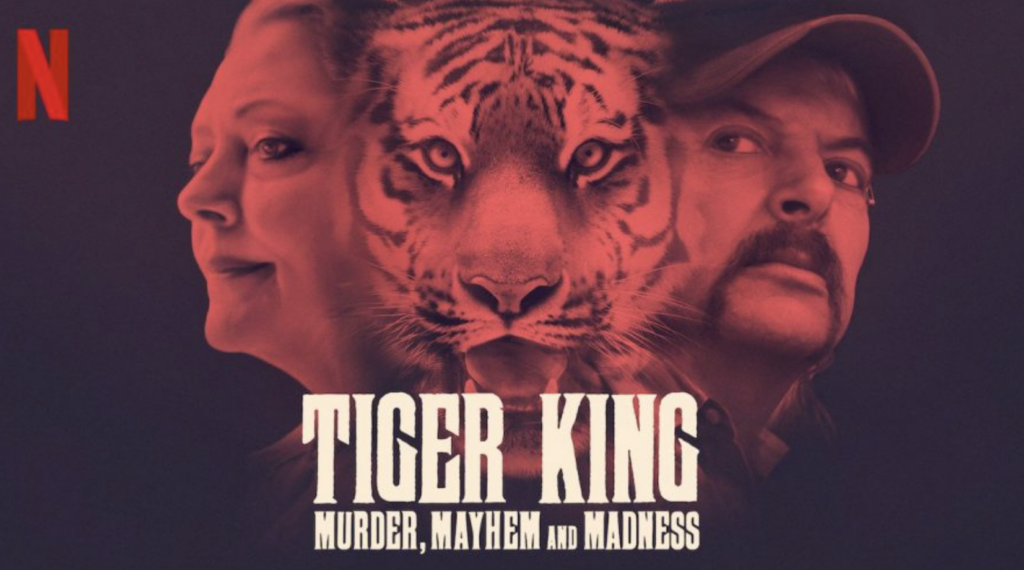
By Dave Hansen
Have you ever used a photograph to illustrate a historical event in your writing? Or quoted, say from a letter, to point out some fact that the author conveyed in their writing? According to the 10th Circuit, these aren’t the kinds of uses that fair use supports.
On Thursday, Authors Alliance joined with EFF, the Association of Research Libraries, the American Library Association, and Public Knowlege in filing an amicus brief asking the 10th Circuit Court of Appeals to reconsider its recent fair use decision in Whyte Monkee v. Netflix.
The case is about Netflix’s use of a funeral video recording in its documentary series Tiger King, a true crime documentary about Joseph Maldanado, aka Joe Exotic, an excentric zookeeper, media personality, exotic animal owner, and convicted felon. The recording at issue was created by Timothy Sepi/Whyte Monkee, as a memorial for Travis Maldonado, Joe Exotic’s late husband. Netflix used about 60 seconds of the funeral video in its show. Its purpose was, among other things, to “illustrate Mr. Exotic’s purported megalomania, even in the face of tragedy.”
A three-judge panel of the 10th Circuit issued its opinion in late March, concluding that Netflix’s use was not “transformative” under the first fair use factor and therefore disfavored as a fair use. The panel relied heavily on the Supreme Court’s recent decision in Andy Warhol v. Goldsmith, taking that case to mean that uses that do not comment or criticize the artistic and creative aspects of the underlying work are generally disfavored. So, the court concluded:
Defendants’ use of the Funeral Video is not transformative under the first fair use factor. Here, Defendants did not comment on or “target” Mr. Sepi’s work at all; instead, Defendants used the Funeral Video to comment on Joe Exotic. More specifically, Defendants used the Funeral Video to illustrate Mr. Exotic’s purported megalomania, even in the face of tragedy. By doing so, Defendants were providing a historical reference point in Mr. Exotic’s life and commenting on Mr. Exotic’s showmanship. However, Defendants’ use did not comment on Mr. Sepi’s video—i.e., its creative decisions or its intended meaning.
You can probably see the problem. Fair use has, for a very long time, supported a wide variety of other uses that incorporate existing works as historical reference points and illustrations. Although the Supreme Court talked a lot about criticism and comment in its Warhol opinion (which made sense, given that the use before it was a purported artistic commentary), I think very few people interpreted that decision to mean that only commentary and criticism are permissible transformative fair uses. But as our brief points out, the panel’s decision essentially converts the Supreme Court’s decision in Warhol from a nuanced reaffirmation of fair use precedent into a radical rewrite of the law that only supports those kinds of uses.
Our brief argues that the 10th Circuit misread the Supreme Court’s opinion in Warhol, and that it ignored decades of fair use case law. We point to a few good examples – e.g., Time v. Bernard Geis (a 1968 case finding fair use of a recreation of the famous Zapruder film in a book titled “Six Seconds in Dallas,” analyzing President Kennedy’s assassination), New Era Publications v. Carol Publishing (a 1990 case supporting reuse of lengthy quotations of L Ron Hubbard in a book about him, to make a point about Hubbard’s “hypocrisy and pomposity”) and Bill Graham Archives v. Dorling Kindersley (a 2006 case finding fair use of Grateful Dead concert posters in a book using them as historical reference points).
Our brief also highlights how communities of practice such as documentary filmmakers, journalists, and nonfiction writers have come to rely on fair use to support these types of uses–so much so that these practices are codified in best practices here, here, and even here Authors Alliance’s own Fair Use for Nonfiction Authors guide.
Although it is rare for appellate courts to grant rehearing of already issued opinions, this opinion has drawn quite a lot of negative attention. In addition to our amicus brief, there were amicus briefs filed in support of rehearing from:
- The International Documentary Association, Film Independent, Kartemquin Educational Films, Women In Film, The University Film And Video Association
- 31 copyright and media law professors
- The Motion Picture Association
Given the broad and negative reach of this decision, I hope the 10th Circuit will pay attention and grant the request.
Discover more from Authors Alliance
Subscribe to get the latest posts sent to your email.
